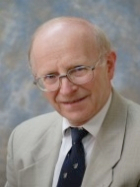I came to Nonlinear Biomedical Physics, via Stochastic Nonlinear Dynamics, from Ultra Low Temperature Physics. All these seemingly different subjects are in reality closely interconnected. In Low Temperature Physics we cool our systems by trying to make them thermodynamically closed, as thermally isolated as possible. But even at our lowest temperatures, in the millikelvin range, fluctuations are still exceedingly important. I was thus introduced to the fluctuational dynamics community and entered on extraordinarily fruitful collaborations with Frank Moss, Mark Dykman, Riccardo Mannella, Nigel Stocks, Dmitry Luchinsky, Aneta Stefanovska, and many many others. Of course, fluctuations are ubiquitous in nature, and they occur in living systems as well as in non-living ones. Now I find myself plunged into the nonlinear and stochastic dynamics of life and, in particular, into cardiovascular and brain dynamics. But I am still very much involved in low temperature physics, where I try to make the simplest models of fluctuations and study quantum turbulence in a well-controlled environment. I find that in some ways the study of living systems - which are thermodynamically open - is far more difficult. One out of many examples is our study of what anæsthesia does to fluctuations in the vital functions of the body. Fluctuations are of prime importance in all branches of science and technology, but it is their diverse manifestations in the life sciences that I find the most challenging and fascinating ...more

